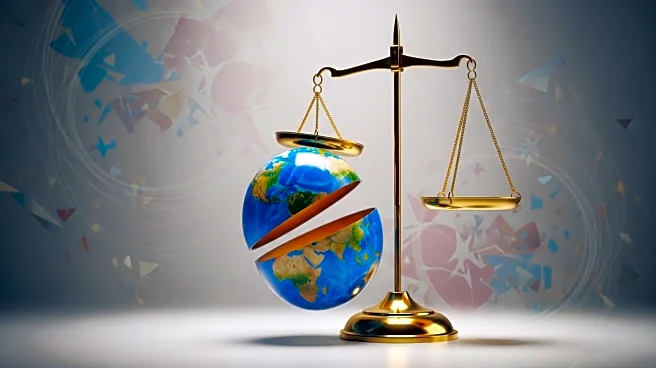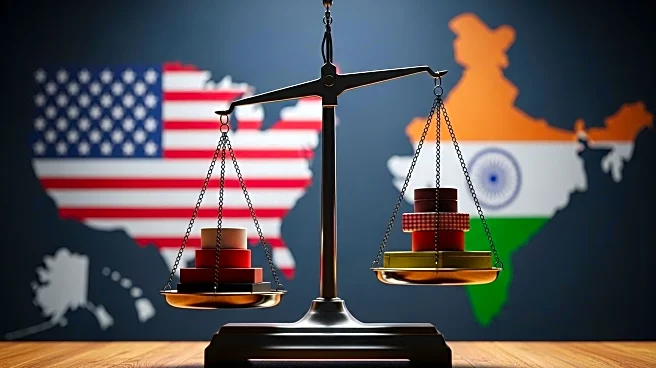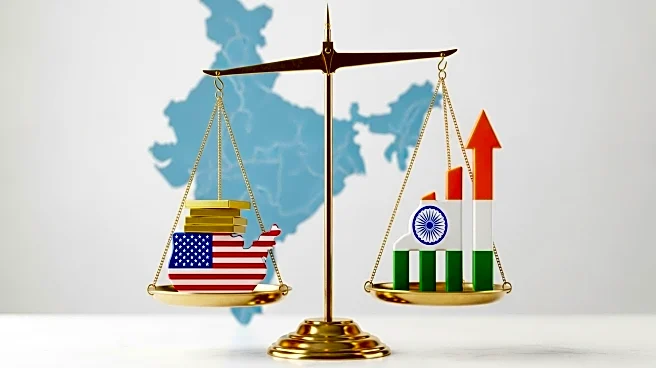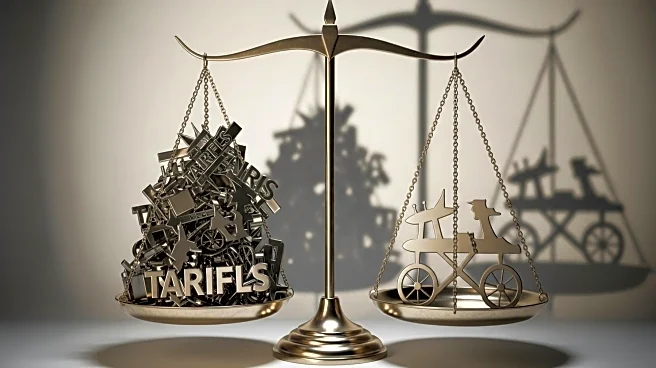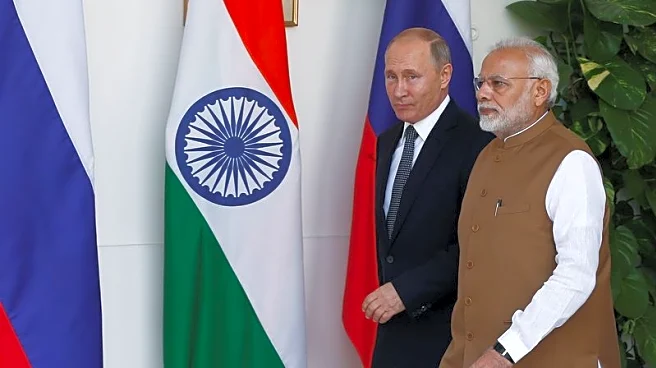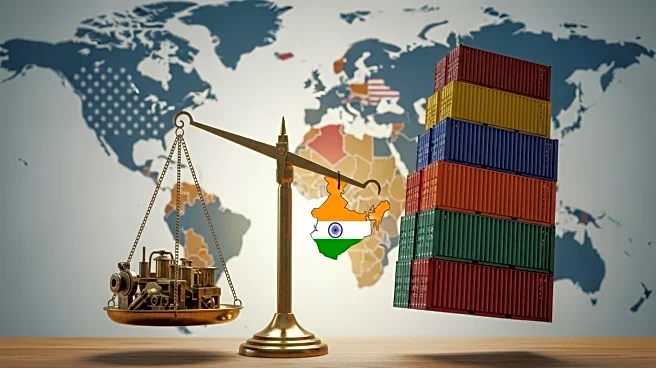What is the story about?
What's Happening?
President Trump has implemented a 50% tariff on a range of Indian goods, including textiles, gems, jewelry, shrimp, and carpets. This move follows an initial 25% tariff imposed earlier, attributed to India's purchase of Russian oil. The tariffs are expected to significantly reduce Indian exports to the U.S., potentially dropping from $86.5 billion to $50 billion by 2026. The affected sectors are labor-intensive and may lose business to other countries like Vietnam and Bangladesh. The Indian pharmaceutical industry is exempt from immediate tariff increases due to its role in providing affordable healthcare in the U.S.
Why It's Important?
The tariffs could severely impact India's export-driven economy, risking hundreds of thousands of jobs in sectors that rely heavily on U.S. trade. The move may also strain U.S.-India relations, as India is the U.S.'s largest trading partner. The tariffs are part of broader geopolitical tensions, with the U.S. targeting India for its Russian oil imports. This could lead India to diversify its trade partnerships and reduce reliance on the U.S. market, potentially affecting global trade dynamics.
What's Next?
India may seek to mitigate the impact by increasing domestic production and exploring new markets. Prime Minister Modi has pledged to protect affected sectors and push for self-reliance. The Indian government is considering financial assistance for exporters and may lower taxes to support economic growth. The situation could lead to India joining multilateral trade pacts and strengthening ties with other countries, including China and Russia.
Beyond the Headlines
The tariffs highlight the geopolitical complexities of global trade, with India caught between U.S. demands and its energy needs. The situation underscores the challenges of balancing national interests with international relations, as India navigates its role in the global economy amid rising protectionism.
AI Generated Content
Do you find this article useful?




